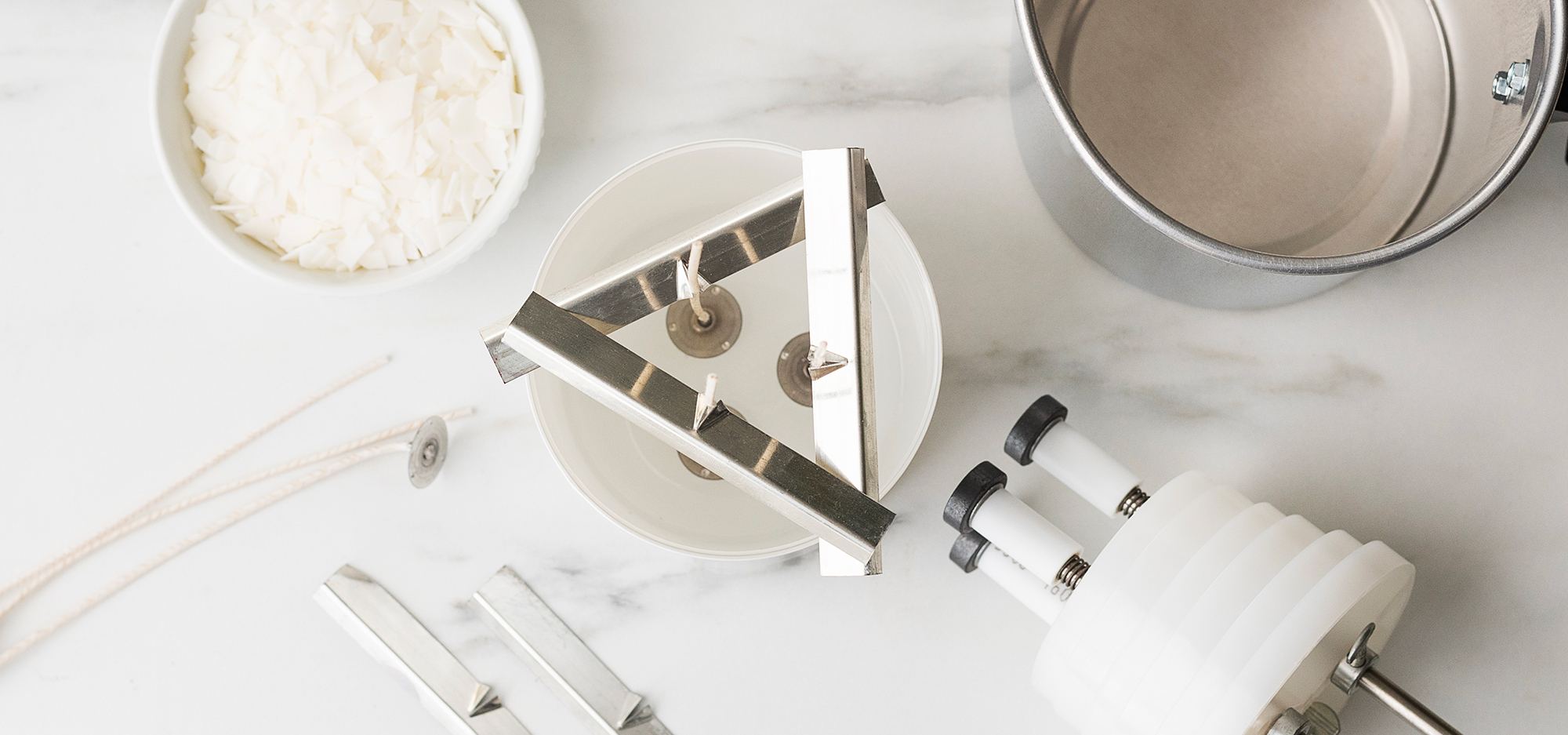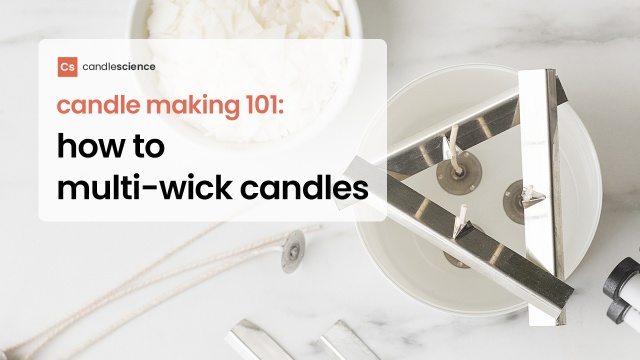candle making 101: how to multi-wick candles An overview of multi-wicking basics is next on the 101 syllabus. In this lesson, you’ll learn how to multi-wick container candles and common mistakes to avoid.

What are multi-wick candles?
Multi-wick candles are just that, candles with more than one wick. Many candle lovers favor the aesthetic of multi-wick candles and their cozy glow. Others gravitate to double-wick and triple-wick candles because they prefer a strong hot throw.
4 steps to multi-wick success
Multi-wicking doesn’t have to be complicated with these four simple steps.
1. Determine how many wicks to use
- Before getting started, decide if multi-wicking is appropriate for your container. In general, multi-wick containers should be at least 3.5 inches in diameter.
- Start slow. Try making double-wick candles before graduating to triple-wick candles. It can also be helpful to observe the difference between single- and double-wick candles before graduating to three wicks.
2. Decide on wick placement
- Plan where you’ll place the wicks. Ideally, the wicks should be halfway between the center and outside edge of the container. Be sure the wicks aren’t so close to the outside edge that the flame might come into contact with the mouth or side of the container. Ideally, wicks should be placed at least 1.5 inches from each other.
- A wick setter is a helpful tool to have on hand when placing multiple wicks.
- Alternatively, make a template to help plan out your wick placement. Trace the bottom of your container, then outline the spots you plan to place your wicks. This visual aid helps to optimize your wick placement before actually placing your wicks.
3. Select your wick size and series
- To determine the wick size to use, think about your candle in sections. If using two wicks, you have two sections; if using three wicks, you have three sections.
- Divide the full diameter of the container by the number of sections. For example, if you have a four-inch container with two sections, divide four inches by two. Then, select a wick size that is appropriate for the size of your sections. Our example results in two, two-inch sections.
- Use the Candle Wick Guide for help selecting your wick series and size. Remember, use the size of your candle section instead of the entire container diameter.
- Wick series correlates to your wax selection. For more information and wick recommendations, see our Candle Wax Guide.
4. Secure your wicks
- You may need to get crafty to secure your wicks when working with larger containers. Popsicle sticks, pencils, clothespins, chopsticks, or rubber-banded skewers are great, low-cost items that can be used to secure wicks while candles cool. Never reuse candle making items for food preparation or consumption.
- Wick bars can be used for many containers.
Wicks of the trade
The candle making process for multi-wick and single-wick candles is similar, but keep these tips in mind to minimize frustration.
Don’t skip testing
- The testing process tends to be a bit more arduous when making multi-wick candles, but you learn a lot from it! Don’t skip out on testing. Follow the normal burn testing guidelines and be ready to make a few adjustments along the way.
- If your candle seems over-wicked, you can either wick down in size or reduce the number of wicks used.
- When in doubt, wick down!
- You may notice that your wicks seem too close or far apart when the candle is burning. After testing, you might decide to adjust the placement of your wicks as well.
Prep and plan your candle
- What wax are you using? Familiarize yourself with its properties and note its recommended wick series. If possible, use wax you’ve worked with before.
- What container are you using? Record the container’s inner top diameter and consider its shape. Is it straight sided, larger at the base than the top, or otherwise unusually shaped?
- Planning your candle and taking detailed notes can help you learn from the testing process and makes it easier to adjust variables as needed. For example, containers that taper in towards the top may trap excess heat and perform the best when wicked down; taking note of this could help you make a better wick selection when working with similarly shaped containers in the future.
The more the merrier
One wick, two wick, three wick, score! All candle making techniques get easier with practice, so let yourself have fun while learning something new. Try to let burn testing feel more like a learning experience than a challenge!
The multi-wicking process will eventually become second nature and you’ll build valuable skills with each candle you make.
